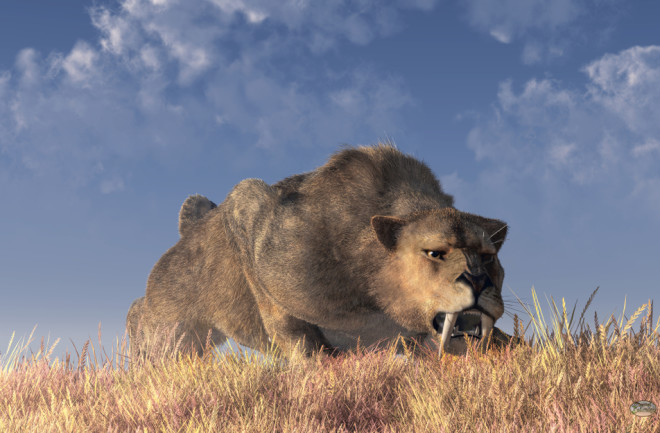Inbreeding is not just something that happens among animals held in captivity. It can also happen to endangered populations in the wild, as is the case with the highly threatened Florida panther. Only about 200 live in the wild, a vanishingly narrow gene pool.
As a result, the panthers often suffer from misshapen tails, heart defects, undescended testicles and joint disease.
According to a new study, endangered panthers share the ailment of joint disease with dire wolves (Aenocyon dirus) and sabre-tooth cats (Smilodon fatalis) that lived 55,000 years to 12,000 years ago during the Last Ice Age. Up to 7 percent suffered from a disease called osteochondrosis dissecans (OCD), which also afflicts humans, domesticated dogs and other vertebrates.
Read More: Everything You Need to Know About the Saber Tooth Tiger Extinction
Most commonly, it happens when the end of a bone loses blood flow, causing a piece of it to fall off and damage the cartilage within the joint.
"It’s possible that the high incidence of the disease in these fossil animals could be a sign of dwindling populations, as these ancient species approached extinction," a statement says.
Taken From the Tar Pits
The study by Hugo Schmökel, a veterinary orthopedic surgeon based in Sweden, and two researchers from the La Brea Tar Pits and Museum, looked at over 1,000 saber-tooth cat bones and 500 that once belonged to dire wolves. They all came from the famous Rancho La Brea asphalt seeps in Los Angeles, Calif., first discovered by a Spanish explorer in 1769.
Thousands of years ago, prey animals fell into the seeps, made a ruckus, and attracted predators such as the saber-tooth cat and the dire wolf. Eventually, one of them got hungry enough to spring into the sticky substance and found itself stuck, too. Today, a tall fence runs around the seeps, but archaeologists have carried out more than 100 excavations of them since the early 1900s.
They have preserved the bones of at least 2,000 saber-tooth cats, as well as 4,000 dire wolves, a new species awarded by a 2021 paper. As a result, the wolf-like creature is no longer considered a wolf or canid, technically, but that doesn’t make it any less fearsome. Schmökel and his colleagues found numerous examples of bone lesions suffered by both species as they went after large prey.
Ancient Affliction
Their study is one of the few to ever investigate skeletal diseases in wild animals, and they found unexpected similarities to modern-day humans. Like us, ancient saber-tooth cats and dire wolves tended to have OCD damage centered on the shoulder and knee bones.
The paper says the long history of the debilitating disease “supports the need for monitoring of animal domestication, as well as conservation, to avoid unexpected surges in OCD under conditions like inbreeding.”
Read More: The Mysterious Origin of the Real-Life Dire Wolf

